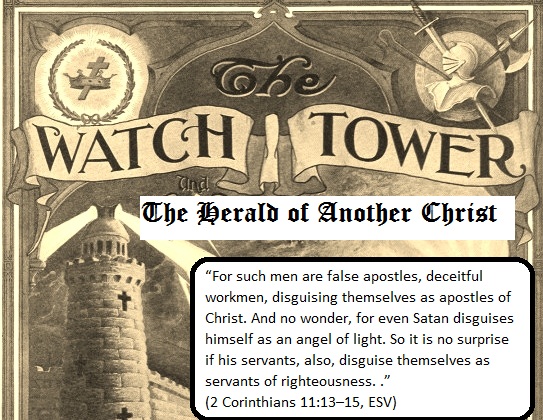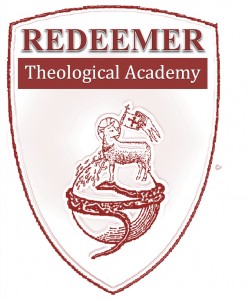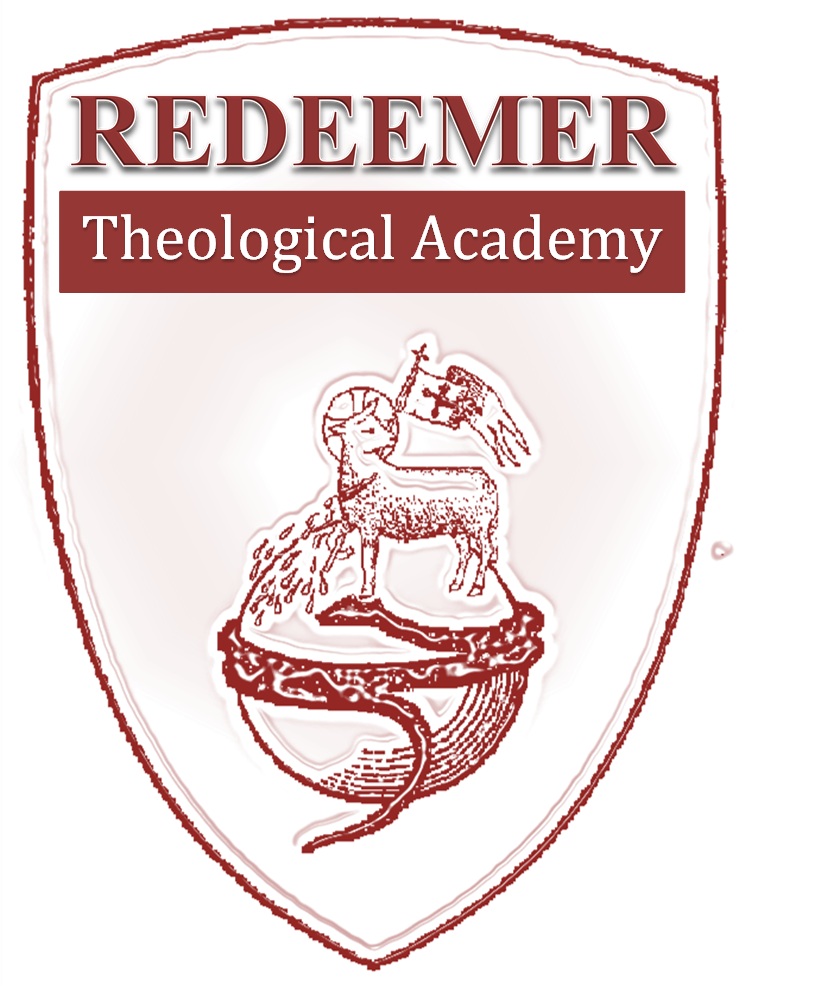The Watchtower Interlinear Translation of the Greek Scriptures
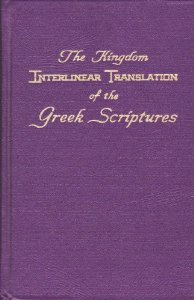
An interlinear Greek Bible allows the average person to see the direct correlation between an English translation and the Greek text. Typically, underneath each Greek word in the text the equivalent of the simple English word will be placed. Due to differences in Greek word order and unique idioms, the English under the text maybe rather clumsy. Thus, it is common for an interlinear to set up each page with a column of the word for word Greek and English next to a column of an actual English translation of the text.
In 1969, the Watchtower organization (“Jehovah’s Witness”) printed a Greek Interlinear of the New Testament scriptures. According the book itself, there were 500,000 copies printed for this first edition. In 1985, the second edition was released in which 800,000 copies were produced. The goal of this book is to help the “sincere” and “humble” student of the Bible to see the accuracy of the Watchtower’s own New World Translation of the Bible which promotes its unique teachings. On the left side of each page, a person could see the word for word Greek and English. On the right side of each page, a person could compare the New World Translation.
This Watchtower “gem” is now out-of-print. Why is this book out-of-print if it clearly testifies to the truthfulness of the Watchtower teachings? Simply put, the goal of the organization backfired. As their own students began to see for the first time the Greek text and compare it with the translation and teaching of the Watchtower, it was made clear that the New World Translation was a deceptive translation of the Greek. The Watchtower Bible is merely a man made book published to promote its false teachings. The organization had to pull the plug and no longer make this resource available. In fact, if you ask the current generation of Watchtower students about this interlinear, you will discover that they have never even heard of it.
If you have ever had a conversation with a Watchtower students (“Jehovah’s Witness”) about the identity of Jesus, most likely they have discussed their “scholarly” knowledge of the Greek text of John 1:1. Understand that to the average person who has no knowledge of Greek, the mere fact that they can tell you that the Greek word for God is θεὸς (theos) is impressive in and of itself. In addition, when the Watchtower disciple explains the Greek usage of definite and indefinite articles to either speak about “the God” or “a god,” you might just assume that they must be Greek scholars. After all, it is all Greek to you.
Below you will see a scan of the 1969 Watchtower Interlinear. As you can see, the left column consists of the Greek and English word for word and the right column consists of the New World Translation of the text. Take note that in John 1:1 the first time that the Greek word for God is used it has a definite article while the second time that it is used it is lacking a definite article. Thus, the Watchtower “scholar” will explain to you that the first time the Greek is referring to “the God” while the second time the Greek is calling Jesus “a god” meaning that Jesus is not “the God” but just a demigod. Therefore, when the Greek word θεὸς is used for the Father, then the New World Translation renders it “God” with a capital letter “G.” When it refers to Jesus, then it is rendered “god” with a lower case “g.”
Next, notice that the Greek word for beginning (ἀρχῇ) is also lacking the definite article as it is in verse two. Thus, according the the Watchtower “Greek scholarship” this should be translated as “a beginning” and not “the beginning.” However, look at the way in which the New World Translation renders the text on the right.
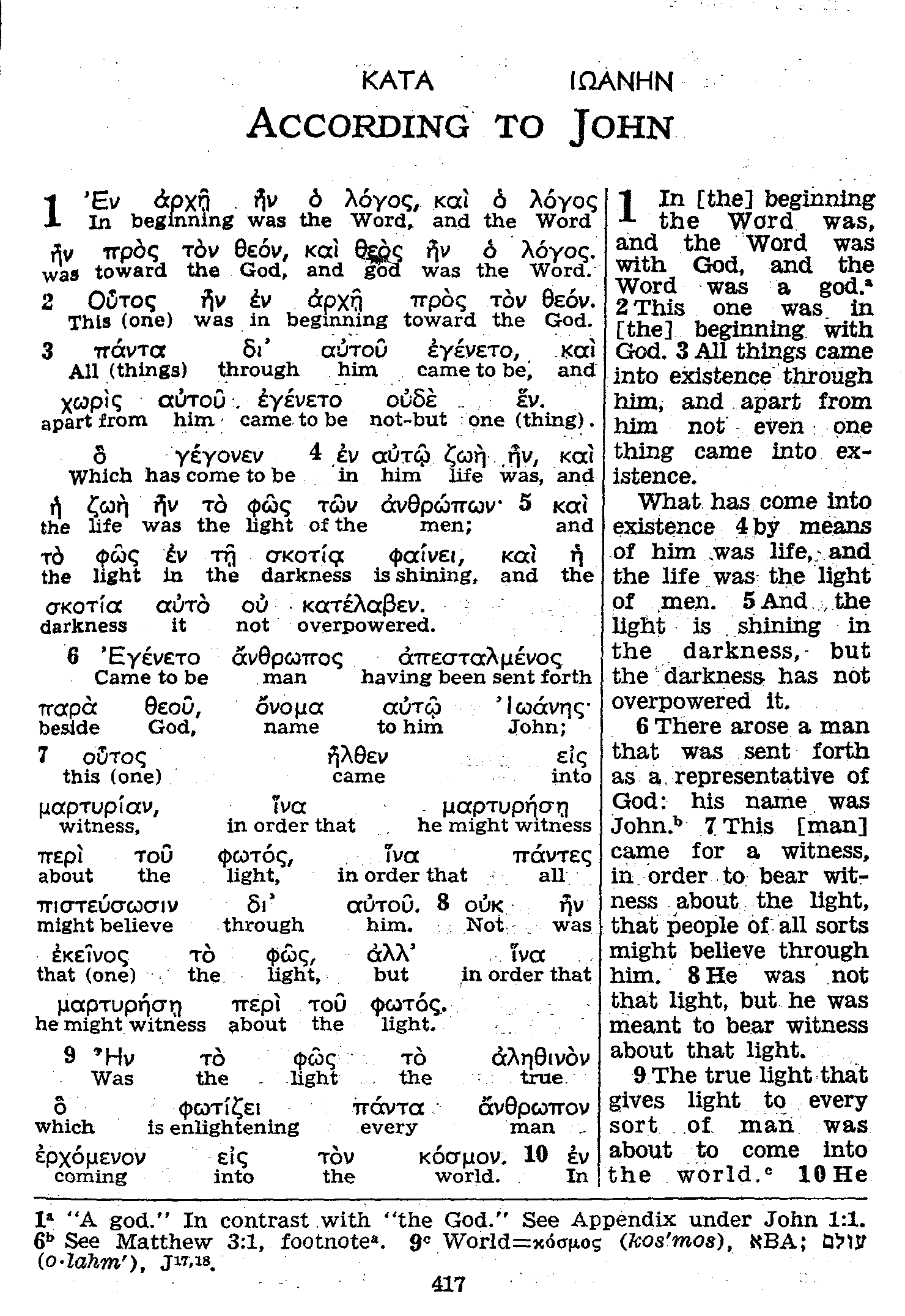
Furthermore, take a look at verse 6 above. Notice that the Greek word for God (θεοῦ) is missing the definite article; yet, the New World Translation does not render that John was sent from “a god.” According to their superior Greek “scholarship,” the text should be saying that John was sent from the Word who is “a god.” However, they translate that John was sent from “the God.”
The same inconsistency happens in the New World Translation of John 1:12-13. See the Watchtower interlinear below and compare the Greek with the translation on the right.
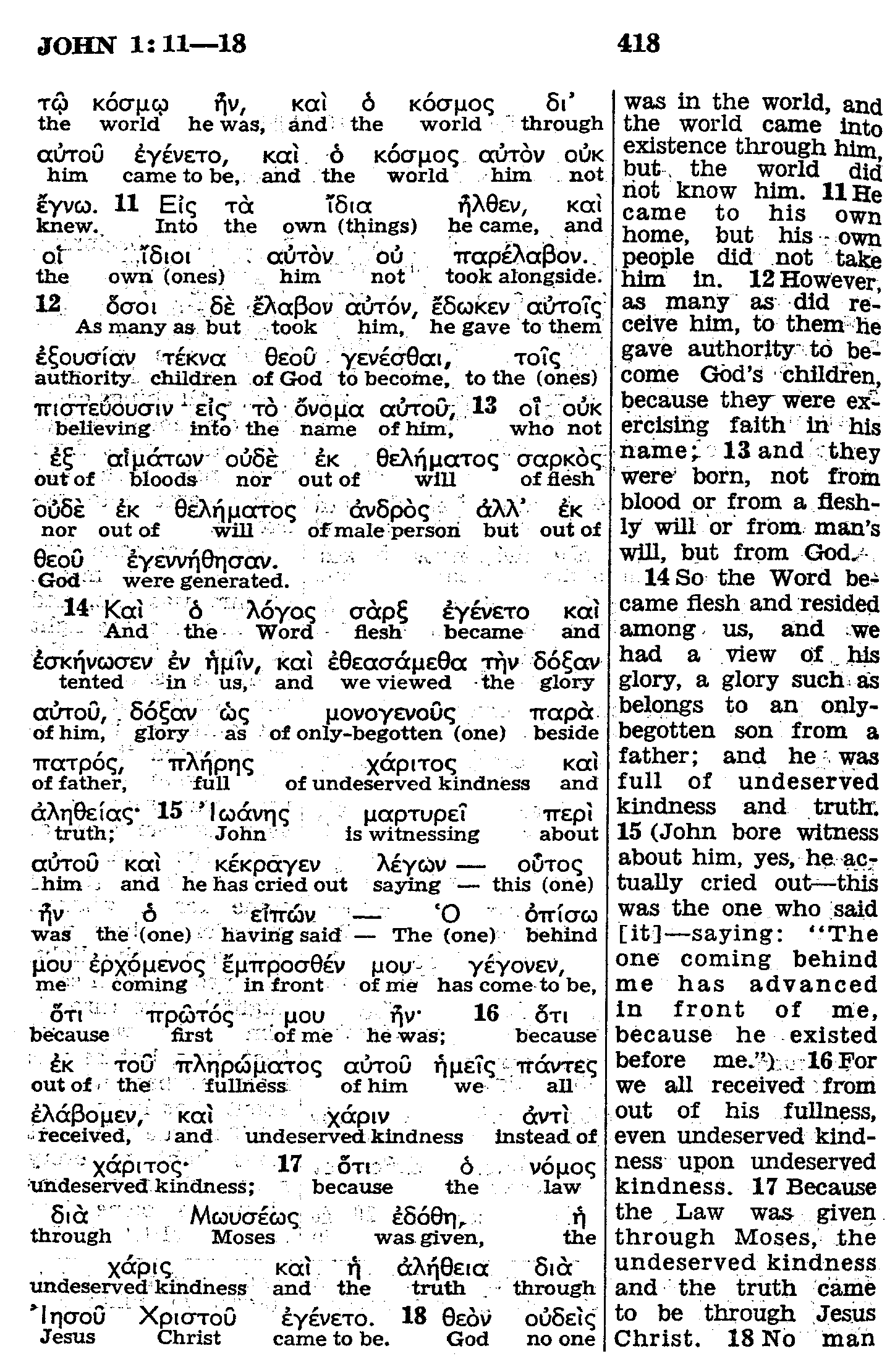
Again, you can see this embarrassing “scholarship” starting with verse 18 above and continue to the page below by comparing the Greek to the translation.
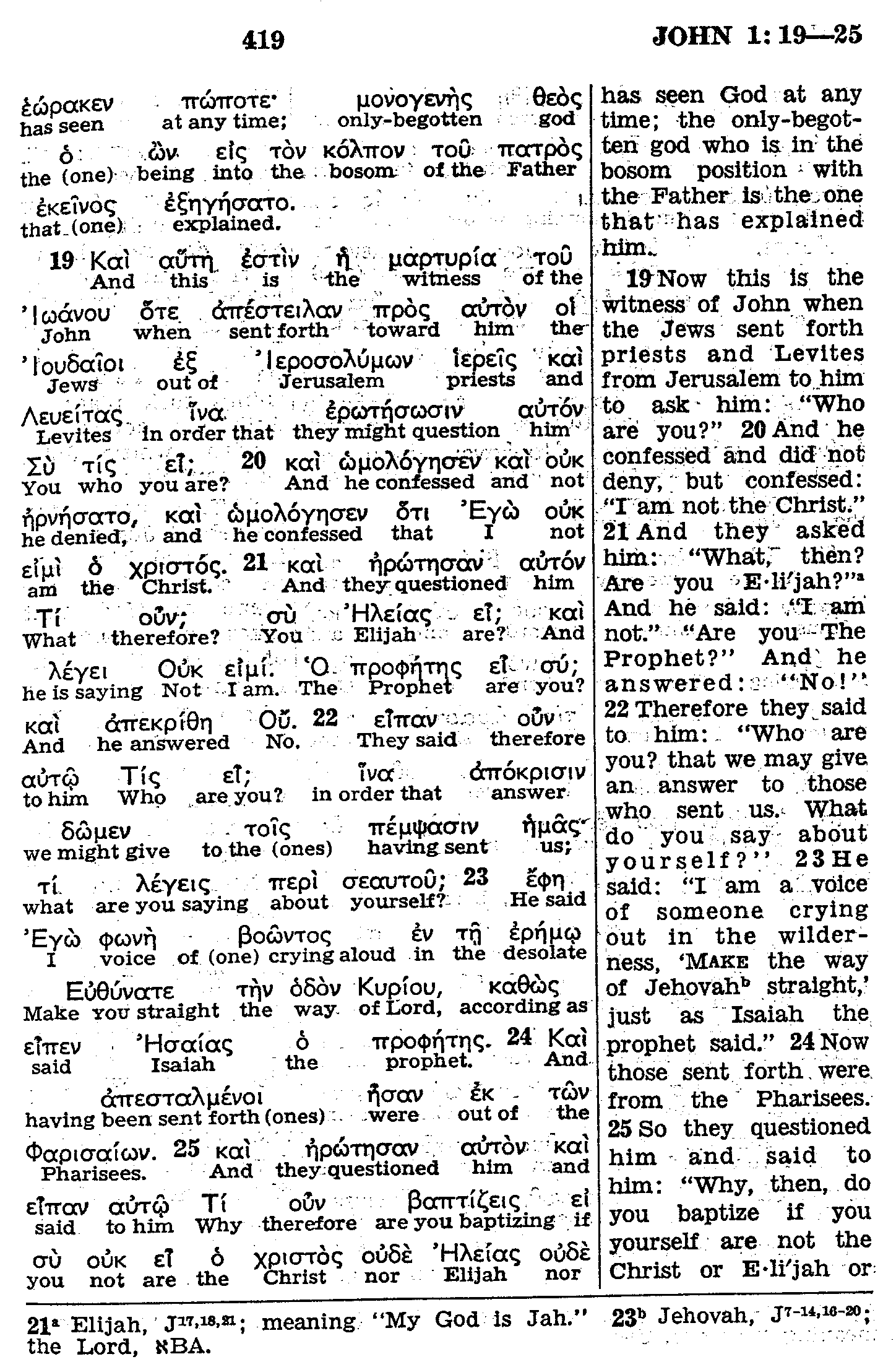
Later in John chapter 20, you can see from the Greek that Jesus calls the Father “a god” according to the Greek in verse 17 because there is no definite article. But, the New World Translation has to say that the Father is “God” and not “god.”

As you can see, the Watchtower Greek interlinear is not helpful in proving that Jesus is a demigod according to the Greek text while the Father is the God. Again, why do you think that this “gem” is out-of-print?
